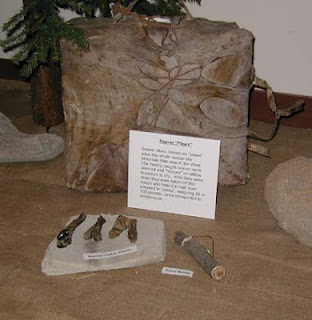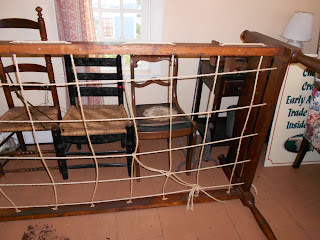Here’s a list for those of you looking for Revolutionary War era books for your children:
The Fighting Ground (Grades 4-7)
Avi
13-year-old Jonathan goes off to fight in the Revolutionary War and discovers the real war is being fought within himself.
Night Journeys (Grades 4-7)
Avi
In the spring of 1768, 12-year-old Peter, living with his Quaker guardian near the Pennsylvania-New Jersey border, joins in the search for two runaway indentured servants.
The Year of the Hangman (Grades 8-10)
Gary Blackwood
Kidnapped from England and taken to the American colonies, a 15-year-old boy becomes part of a story that asks what would have happened if the British had defeated the Americans in 1777.
Attack of the Turtle: a Novel (Grades 4-6)
Drew Carlson
During the Revolutionary War, 14-year-old Nathan joins forces with his older cousin, the inventor David Bushnell, to secretly build the first submarine used in naval warfare.
James Lincoln Collier
A classic that recounts the tragedy that strikes the Meeker family during the Revolution when one son joins the rebel forces while his family tries to stay neutral in a Tory town. (Note: This book is available on audio.)
The Journal of William Thomas Emerson, a Revolutionary War Patriot (Grades 4-8)
Barry Dennenberg
As tensions escalate in the period before the Revolutionary War, a boy surrounded by political rumblings and violence becomes a spy for the rebel colonists. (Dear America/My Name is America)
Betsy Zane, The Rose of Fort Henry (Grades 5-8)
Lynda Durrant
In 1781, 12-year-old Elizabeth Zane, great-great-aunt of novelist Zane Grey, leaves Philadelphia to return to her brothers’ homestead near Fort Henry in what is now West Virginia, where she plays an important role in the final battle of the American Revolution.
Give Me Liberty (Grades 7-9)
Laura Elliott
13-year-old Nathaniel, an indentured servant in colonial Virginia, and his master must decide whether or not to join in the fight for liberty as the American Revolution erupts.
Johnny Tremain: A Novel for Old and Young (Grades 4-6)
Esther Forbes
After injuring his hand, a silversmith’s apprentice in Boston becomes a messenger for the Sons of Liberty in the days before the American Revolution.
Hope’s Crossing (Grades 5-8)
Joan Goodman
During the Revolutionary War, 13-year-old Hope finds herself enslaved in a Tory household on Long Island and uses all her resources to escape and make it home.
The Winter of Red Snow: The Revolutionary War Diary of Abigail Jane Stewart, Valley Forge, Pennsylvania, 1777 (Grades 5-8)
Kristiana Gregory
During the winter of 1777-1778, 11-year-old Abigail Jane Stewart witnesses George Washington readying his young soldiers for battle on the frozen fields of Valley Forge.
William Lavender (2005)
The 14-year-old orphaned daughter of an English earl arrives in Charleston, South Carolina, in 1776 and finds her family divided over the question of American independence.
The Keeping Room (Grades 4-6)
Anna Myers
Left in charge when his father leaves their South Carolina home to fight in the Revolutionary War, 13-year-old Joey finds himself tested when General Cornwallis comes to town and chooses their home as his headquarters.
Nancy’s Story, 1765 (Grades 4-6)
Joan Lowery Nixon
In 1765, just after the passage of the Stamp Act, the colonies are in turmoil, and Nancy herself is experiencing relationship issues with her stepmother.
Guns for General Washington: A Story of the American Revolution (Grades 4-7)
Seymour Reit
Frustrated with life under siege in George Washington’s army, 19-year-old Will Knox and his brother Colonel Henry Knox undertake the task of moving 183 cannons from Fort Ticonderoga to Boston in the dead of winter.
Ann Rinaldi (2004)
14-year-old Rachel Marsh, an indentured servant in the Boston household of John and Abigail Adams, is caught up in the colonists’ unrest that eventually escalates into the massacre of March 5, 1770.
Finishing Becca: A Story about Peggy Shippen and Benedict Arnold (Grades 7-up)
Ann Rinaldi
14-year-old Becca takes a position as a maid in a wealthy Philadelphia Quaker home and witnesses the events that lead to General Benedict Arnold’s betrayal of the American forces during the Revolutionary War.
Or Give Me Death (Grades 7-9)
Ann Rinaldi
While their father is away advocating independence for the American colonies, the children of Patrick Henry try to raise themselves, manage the family plantation, and care for their mentally ill mother.
Ann Rinaldi
When unrest spreads at the Revolutionary War camp in Morristown, New Jersey, under the command of General Anthony Wayne, a young woman cleverly hides her horse from the mutinous soldiers who have need of it.
An Eye for an Eye: A Story Of The Revolutionary War (Grades 5-9)
Peter Roop
14-year-old Samantha, who should be wearing dresses, knows that in britches she can out-hunt her twin and out-sail her older brother. Can she use those skills when the American Revolution begins?
Young George Washington: The Making of a Hero (Grades 6-8)
John Rosenburg
The early life of the Virginia farmer’s son who would become a Revolutionary War leader and the first President of the United States.
Love Thy Neighbor: The Tory Diary of Prudence Emerson, Green Marsh, Massachusetts, 1774 (Grades 4-7)
Ann Turner
The American Revolution is brought to life through the eyes of Prudence Emerson, who tells this story from the rarely heard perspective of a Tory. (Dear America)
Kings Mountain (Grades 5-7)
G. Clifton Wisler
14-year-old Frank leaves his mountain home in South Carolina to help the Patriot cause during the Revolutionary War.



























